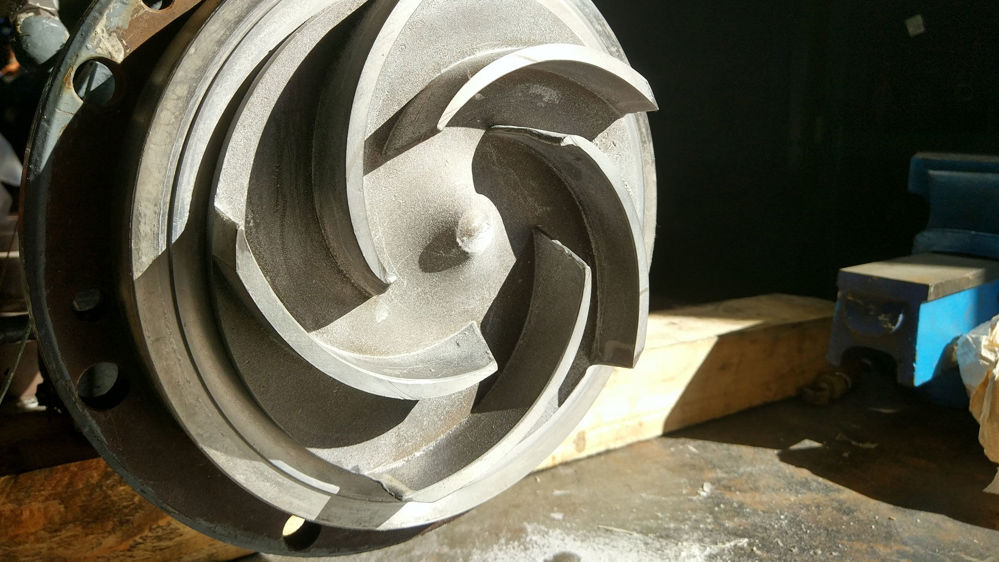Why is Impeller Pump Clearance Critical for Industrial Pumps?

In the realm of industrial pumps, one crucial aspect that significantly impacts performance and efficiency is impeller pump clearance. Failure to set the appropriate clearance can lead to a host of problems, including decreased flow rates, reduced efficiency, and increased wear and tear on pump components. This article aims to highlight the importance of setting the proper clearance for impellers, with a specific focus on open impellers and reverse-vane impellers. Additionally, it provides insights into where to find the impeller clearance dimensions and offers guidelines for effectively setting the clearance.
The Consequences of Incorrect Impeller Pump Clearance
Improper impeller pump clearance can have detrimental effects on pump performance and longevity. Some potential issues include:
- Decreased flow rates and reduced pump efficiency.
- Increased hydraulic losses and decreased system pressure.
- Higher energy consumption and operational costs.
- Elevated wear and tear on impeller and casing surfaces.
- Vibration and cavitation-related problems.
- Premature failure of pump components, leading to costly repairs or replacements.
Setting Impeller Clearance: Open Impeller vs. Reverse-Vane Impeller
The process of setting impeller clearance varies depending on the type of impeller being used. Two common impeller designs are open impellers and reverse-vane impellers.
Open (Semi-Open) Impellers
Open impellers have vanes that are not enclosed within a shroud. The clearance for open impellers is typically indicated or set off the pump casing to the front side of the impeller, specifically the vane tips. To set the impeller clearance:
- Refer to the manufacturer's specifications or technical documentation for the recommended clearance range for the specific open impeller design.
- Measure the clearance between the front side of the impeller (vane tips) and the pump casing.
- Adjust the impeller position or casing to achieve the desired clearance.
- Ensure uniform clearance around the entire circumference of the impeller.
Reverse-Vane Impellers
Reverse-vane impellers have curved vanes enclosed within a shroud. The clearance for reverse-vane impellers is typically set off the stuffing box to the back side of the impeller. To set the proper clearance:
- Consult the manufacturer's guidelines or technical documentation for the recommended clearance range specific to the reverse-vane impeller design.
- Measure the clearance between the back side of the impeller and the stuffing box or rear casing.
- Adjust the impeller or casing position incrementally to achieve the desired clearance.
- Ensure consistent clearance throughout the impeller circumference.
Finding Impeller Clearance Dimensions
Determining the accurate impeller clearance dimension is crucial for proper pump performance. However, the specific clearance dimension can vary based on factors such as the manufacturer, pump frame size, and fluid temperature. To obtain the correct clearance dimension, the manufacturer's instruction book is the most reliable source of information. It provides comprehensive details and guidelines tailored to the specific pump model.
When referring to the instruction book, locate the section that outlines impeller clearance dimensions, taking into account different pump frame sizes. Pay attention to any recommended adjustments or variations in clearance based on the temperature of the fluid being pumped. Follow these steps to ensure optimal pump performance while minimizing potential issues and maximizing efficiency.
Setting Impeller Clearance: Step-by-Step Procedure
When adjusting impeller clearance, follow these general steps:
- Ensure the pump is turned off and safely isolated from the power source to avoid any accidents.
- Refer to the manufacturer's instructions to identify the recommended clearance range specific to the impeller type and the determined clearance dimension.
- Use appropriate measuring tools, such as feeler gauges, to measure the existing clearance.
- Adjust the impeller or casing position incrementally to achieve the desired clearance, considering the guidance provided for open or reverse-vane impellers.
- Confirm uniform clearance around the entire impeller circumference.
- Recheck the clearance after adjustments and ensure it falls within the specified range.
- Test the pump's performance to ensure optimal flow rates and pressure.
Conclusion
Proper impeller pump clearance is essential for achieving optimal pump performance, efficiency, and longevity. Neglecting to set the correct clearance can lead to a range of issues, from decreased flow rates to increased wear on pump components. By following the manufacturer's guidelines, consulting technical documentation, and employing proper adjustment techniques, industrial pump operators can ensure the impeller clearance is appropriately set for both open (semi-open) impellers and reverse-vane impellers. This attention to detail, coupled with accurate impeller clearance dimensions obtained from the manufacturer's instruction book, will help maintain reliable pump operation, reduce maintenance costs, and maximize the system's overall efficiency.
For any questions regarding impeller pump clearance or general pump repair and maintenance, give HISCO Pump a call at 800-236-6930.